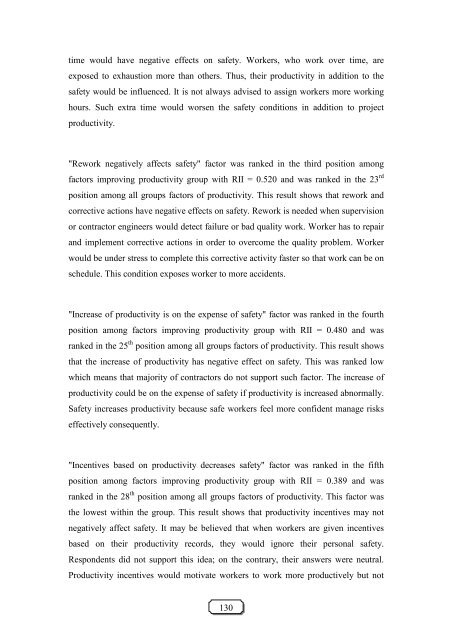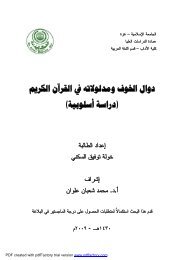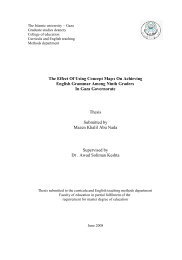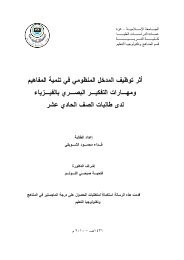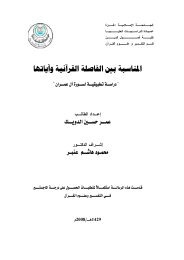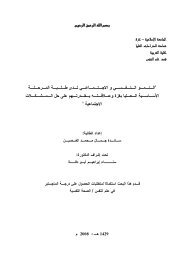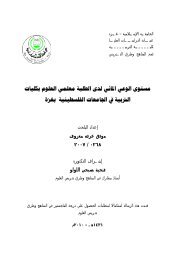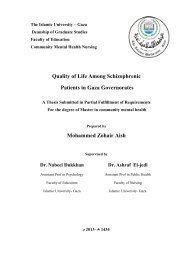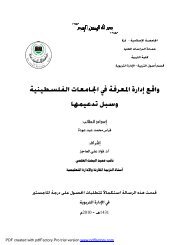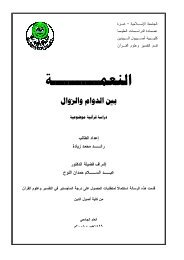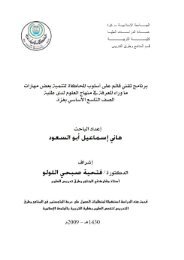developing a model for integrating safety, quality and productivity in ...
developing a model for integrating safety, quality and productivity in ...
developing a model for integrating safety, quality and productivity in ...
Create successful ePaper yourself
Turn your PDF publications into a flip-book with our unique Google optimized e-Paper software.
time would have negative effects on <strong>safety</strong>. Workers, who work over time, areexposed to exhaustion more than others. Thus, their <strong>productivity</strong> <strong>in</strong> addition to the<strong>safety</strong> would be <strong>in</strong>fluenced. It is not always advised to assign workers more work<strong>in</strong>ghours. Such extra time would worsen the <strong>safety</strong> conditions <strong>in</strong> addition to project<strong>productivity</strong>."Rework negatively affects <strong>safety</strong>" factor was ranked <strong>in</strong> the third position amongfactors improv<strong>in</strong>g <strong>productivity</strong> group with RII = 0.520 <strong>and</strong> was ranked <strong>in</strong> the 23 rdposition among all groups factors of <strong>productivity</strong>. This result shows that rework <strong>and</strong>corrective actions have negative effects on <strong>safety</strong>. Rework is needed when supervisionor contractor eng<strong>in</strong>eers would detect failure or bad <strong>quality</strong> work. Worker has to repair<strong>and</strong> implement corrective actions <strong>in</strong> order to overcome the <strong>quality</strong> problem. Workerwould be under stress to complete this corrective activity faster so that work can be onschedule. This condition exposes worker to more accidents."Increase of <strong>productivity</strong> is on the expense of <strong>safety</strong>" factor was ranked <strong>in</strong> the fourthposition among factors improv<strong>in</strong>g <strong>productivity</strong> group with RII = 0.480 <strong>and</strong> wasranked <strong>in</strong> the 25 th position among all groups factors of <strong>productivity</strong>. This result showsthat the <strong>in</strong>crease of <strong>productivity</strong> has negative effect on <strong>safety</strong>. This was ranked lowwhich means that majority of contractors do not support such factor. The <strong>in</strong>crease of<strong>productivity</strong> could be on the expense of <strong>safety</strong> if <strong>productivity</strong> is <strong>in</strong>creased abnormally.Safety <strong>in</strong>creases <strong>productivity</strong> because safe workers feel more confident manage riskseffectively consequently."Incentives based on <strong>productivity</strong> decreases <strong>safety</strong>" factor was ranked <strong>in</strong> the fifthposition among factors improv<strong>in</strong>g <strong>productivity</strong> group with RII = 0.389 <strong>and</strong> wasranked <strong>in</strong> the 28 th position among all groups factors of <strong>productivity</strong>. This factor wasthe lowest with<strong>in</strong> the group. This result shows that <strong>productivity</strong> <strong>in</strong>centives may notnegatively affect <strong>safety</strong>. It may be believed that when workers are given <strong>in</strong>centivesbased on their <strong>productivity</strong> records, they would ignore their personal <strong>safety</strong>.Respondents did not support this idea; on the contrary, their answers were neutral.Productivity <strong>in</strong>centives would motivate workers to work more productively but not130


